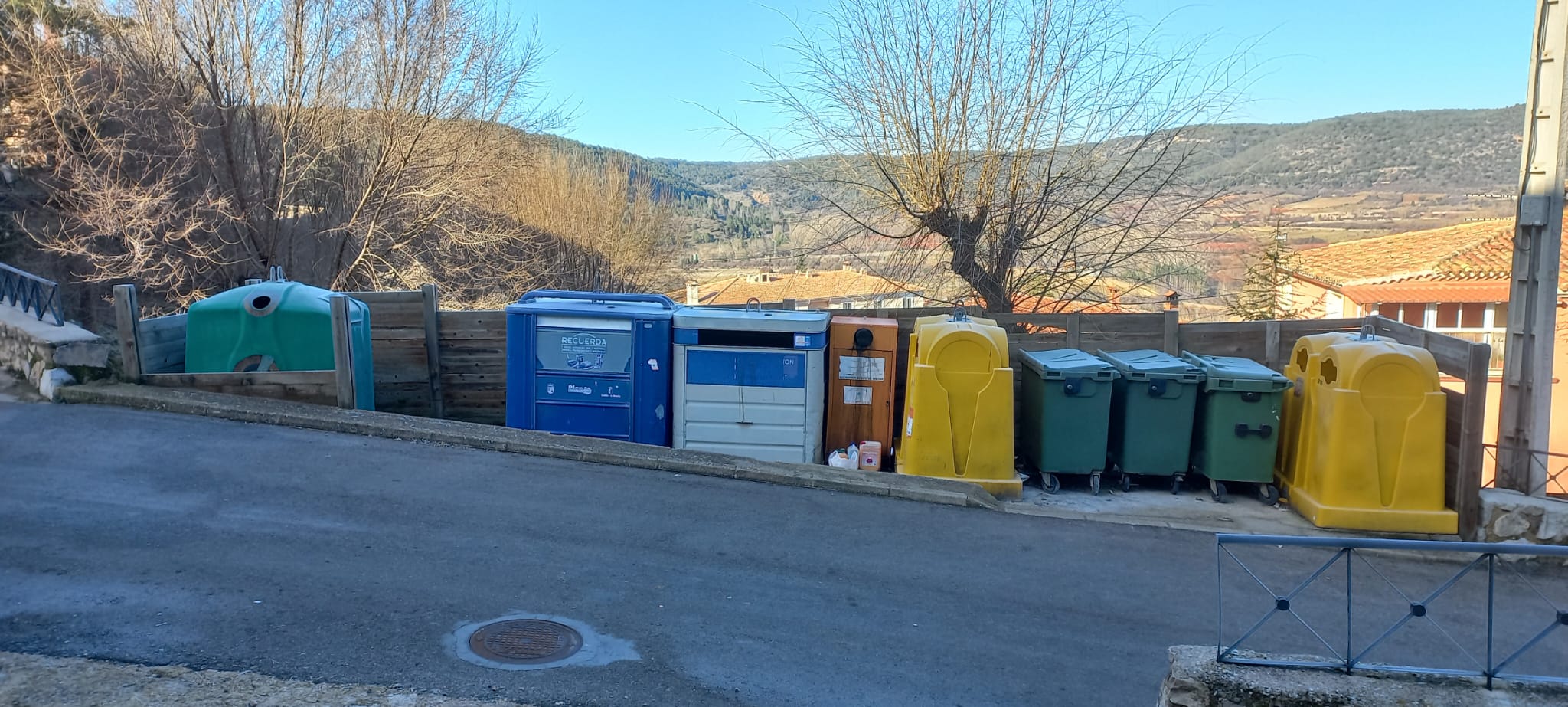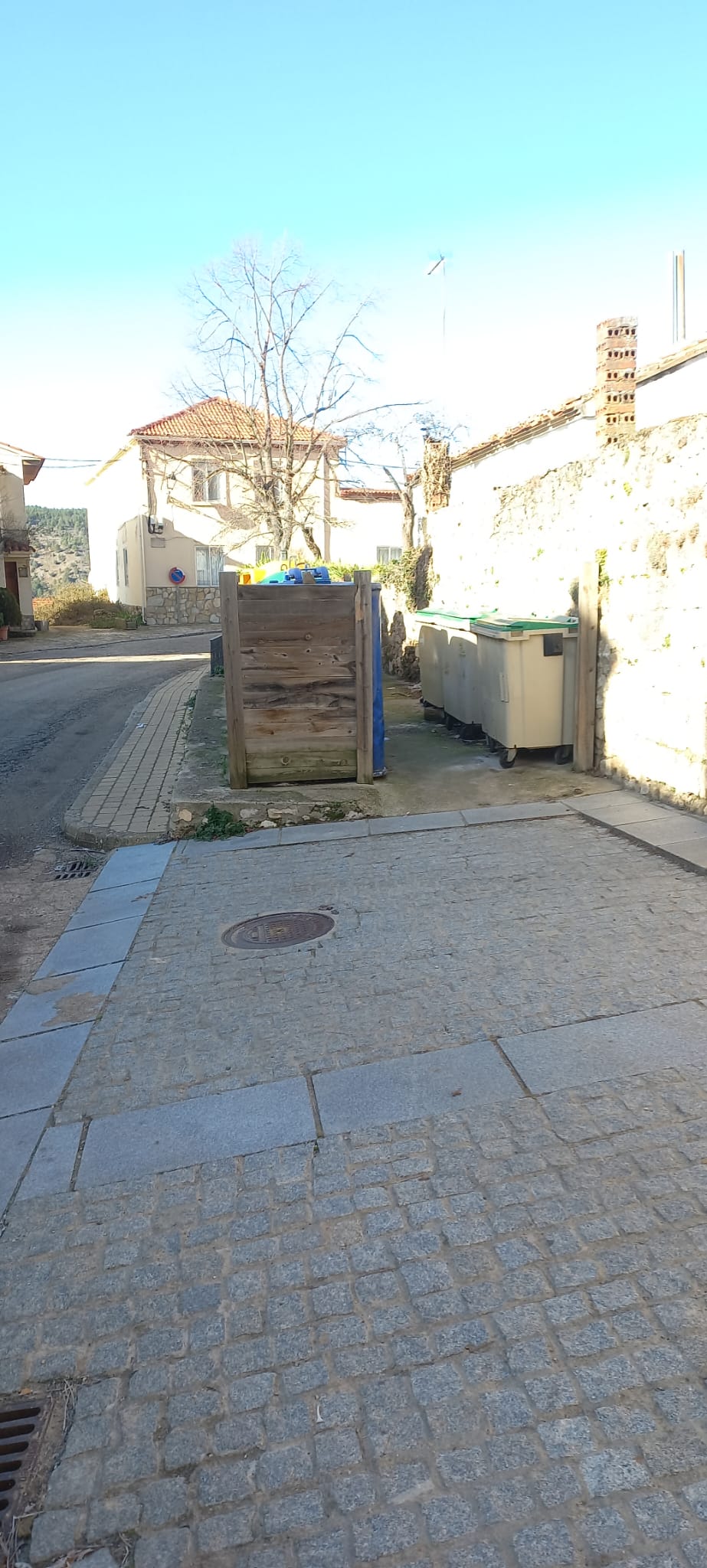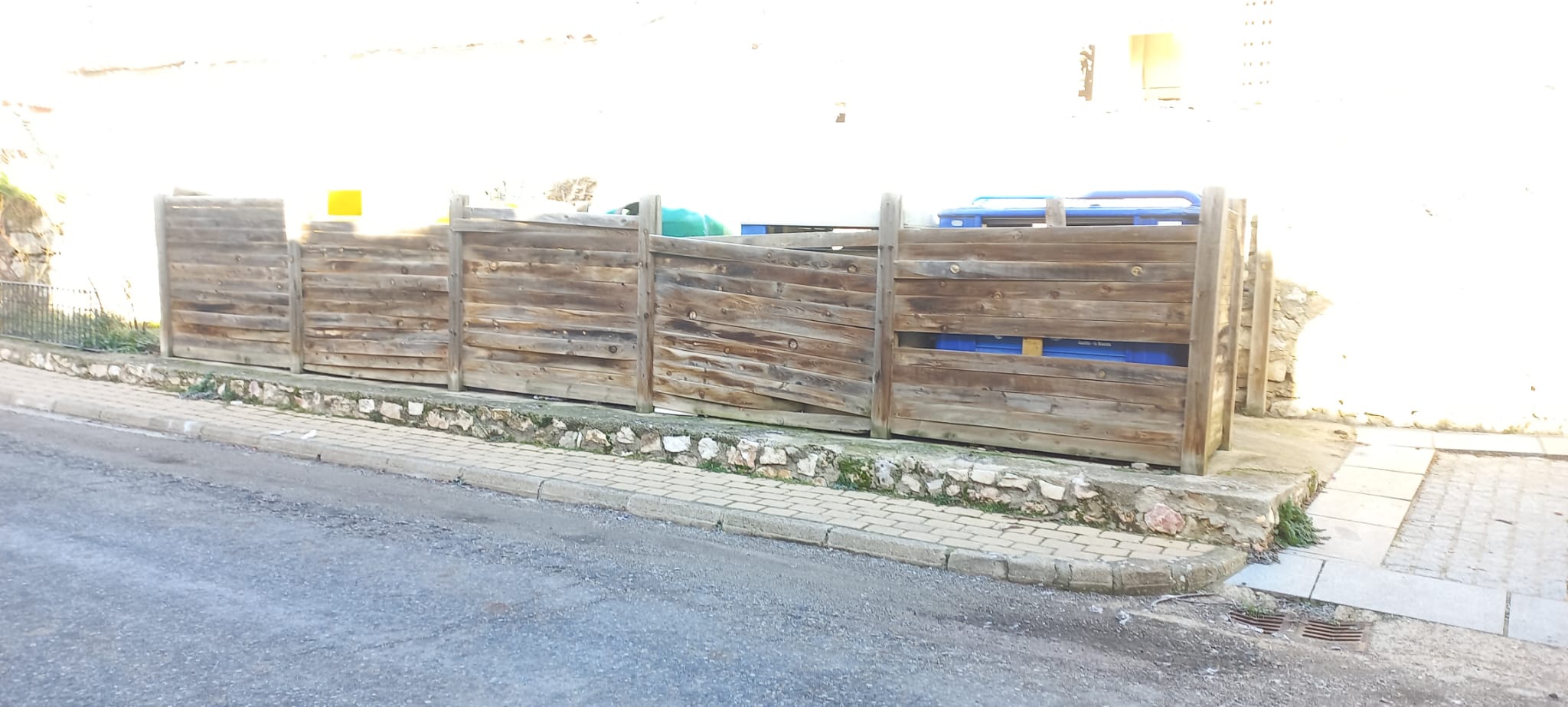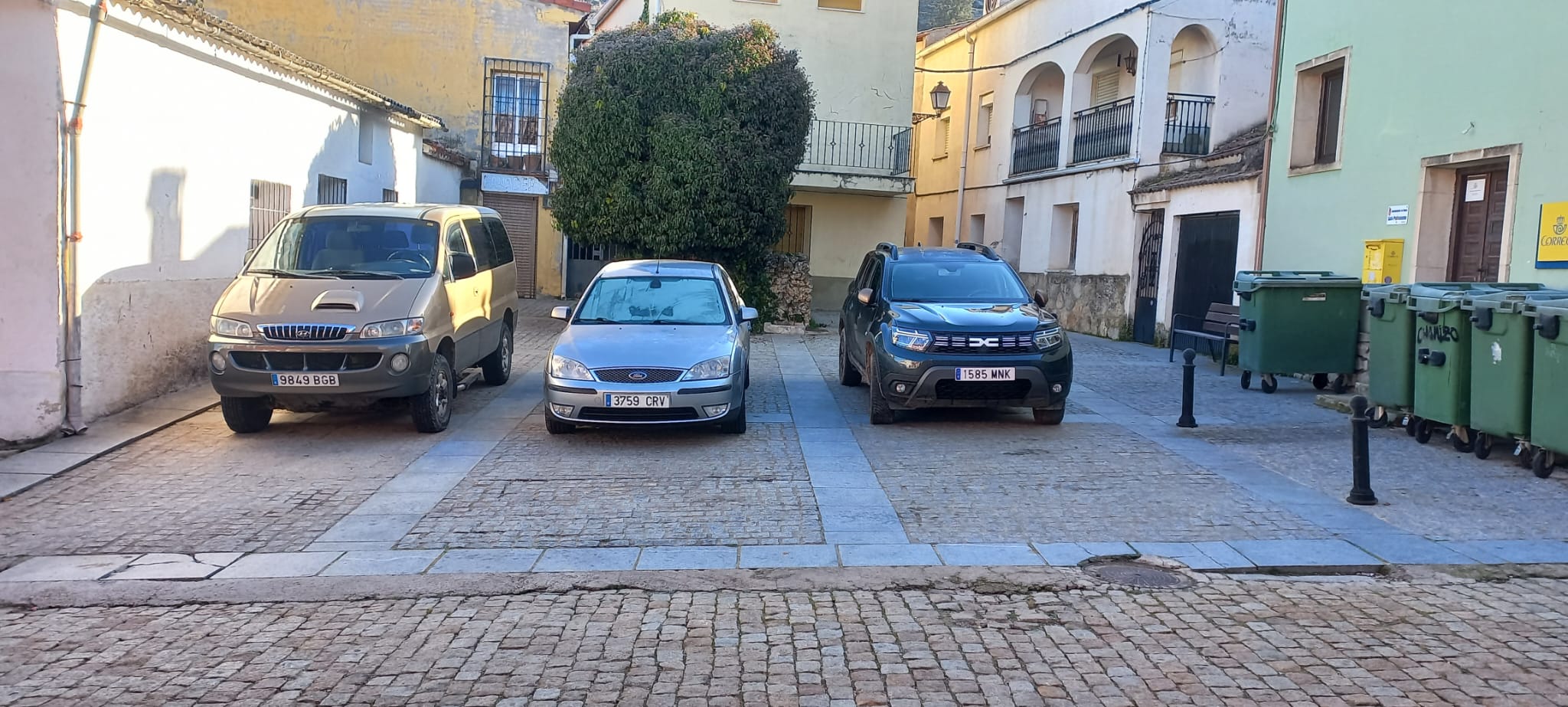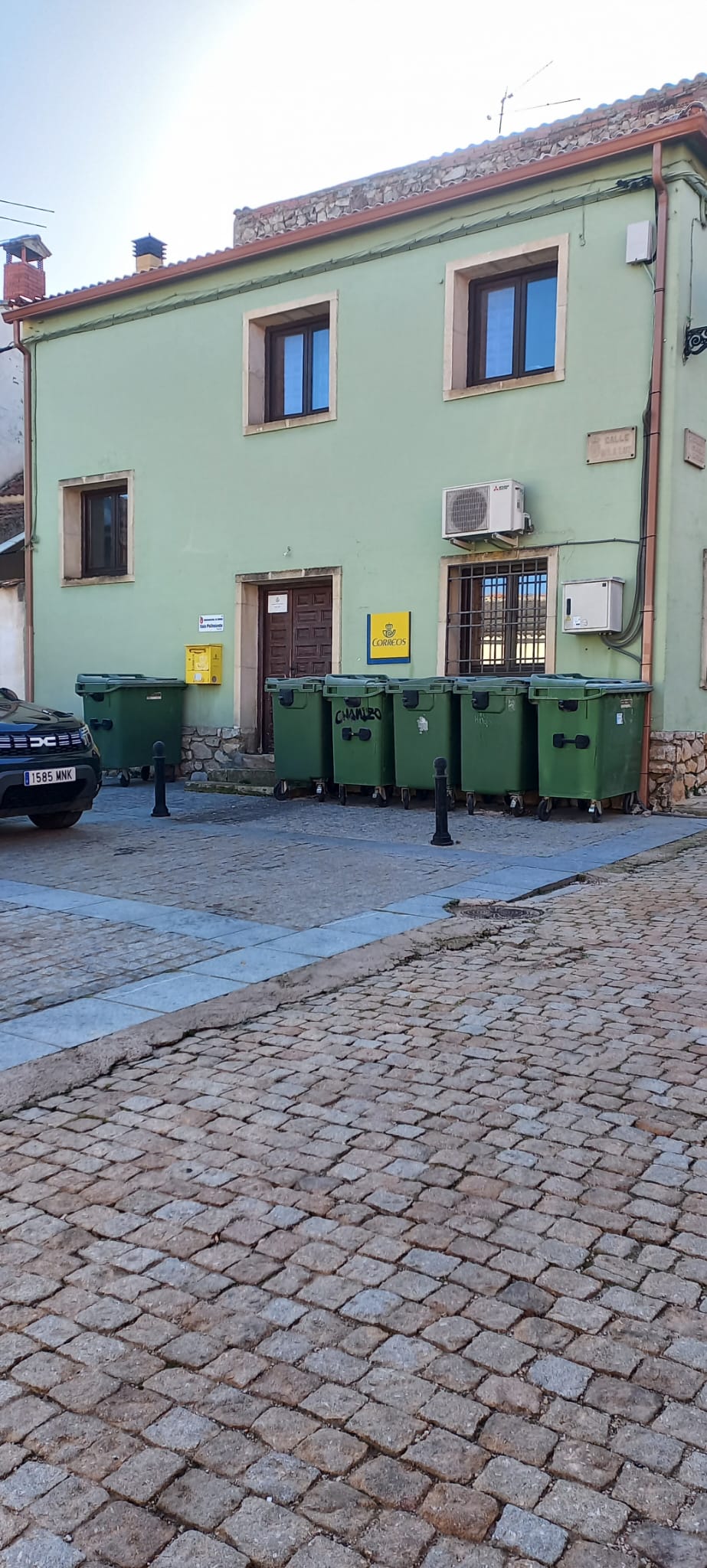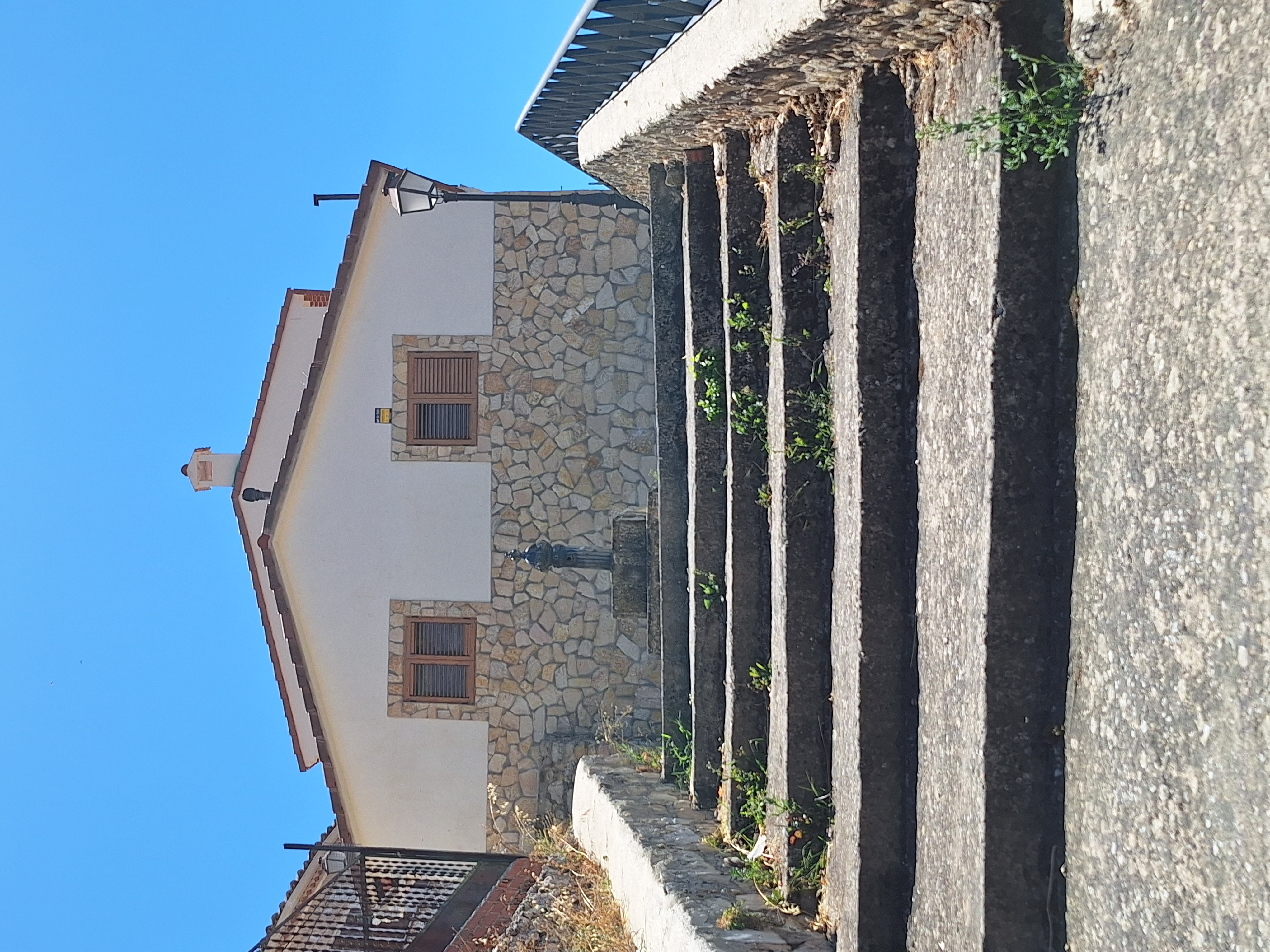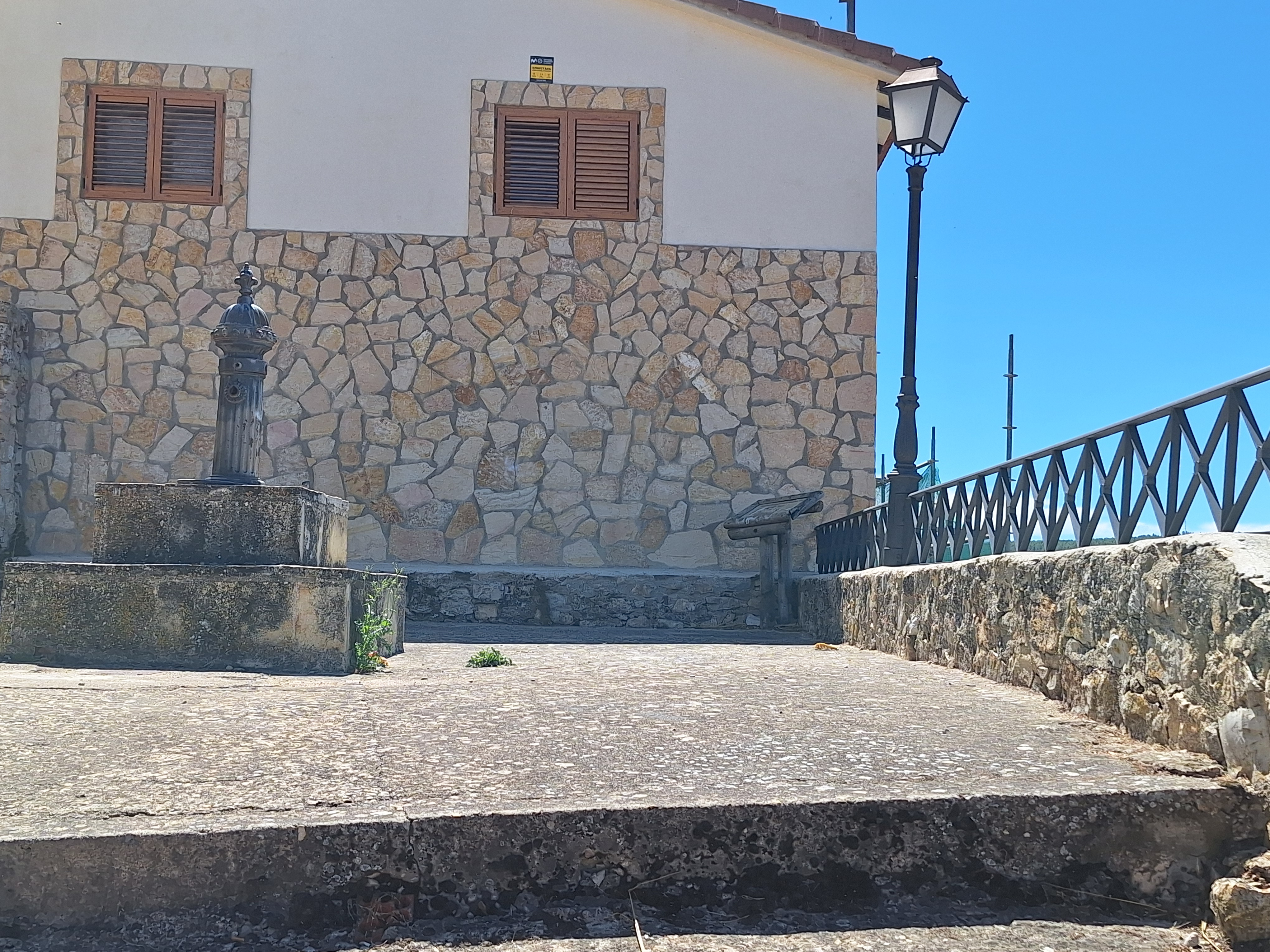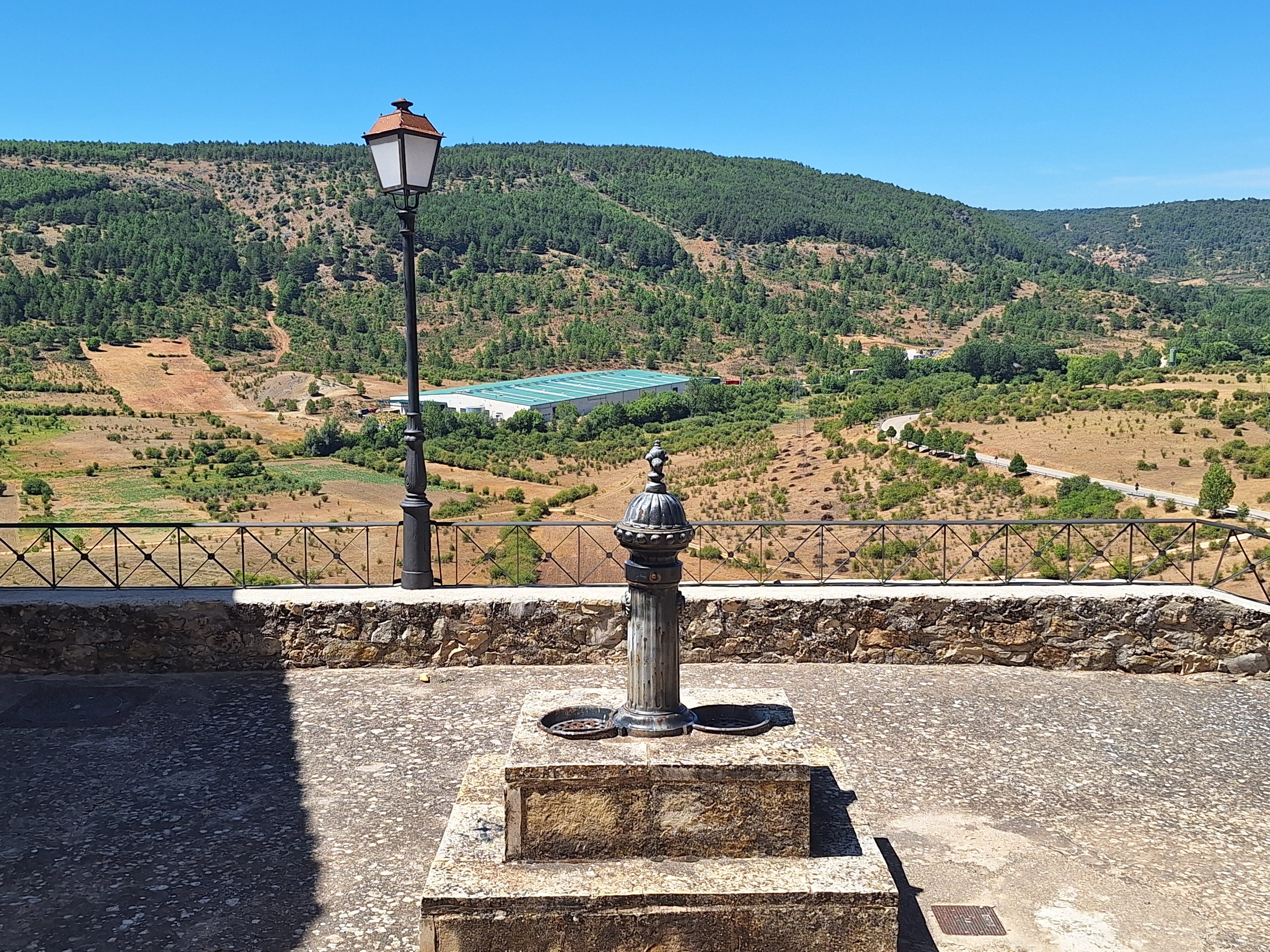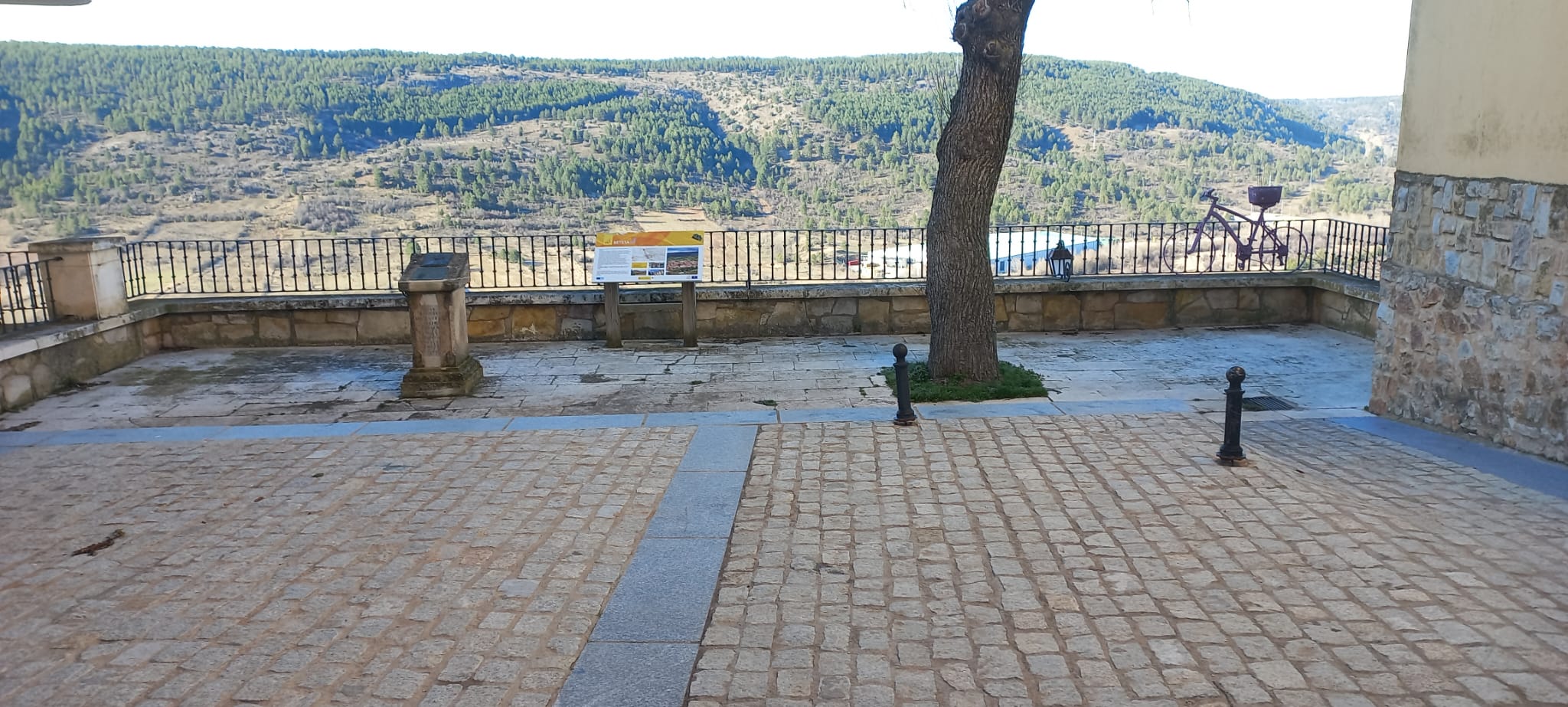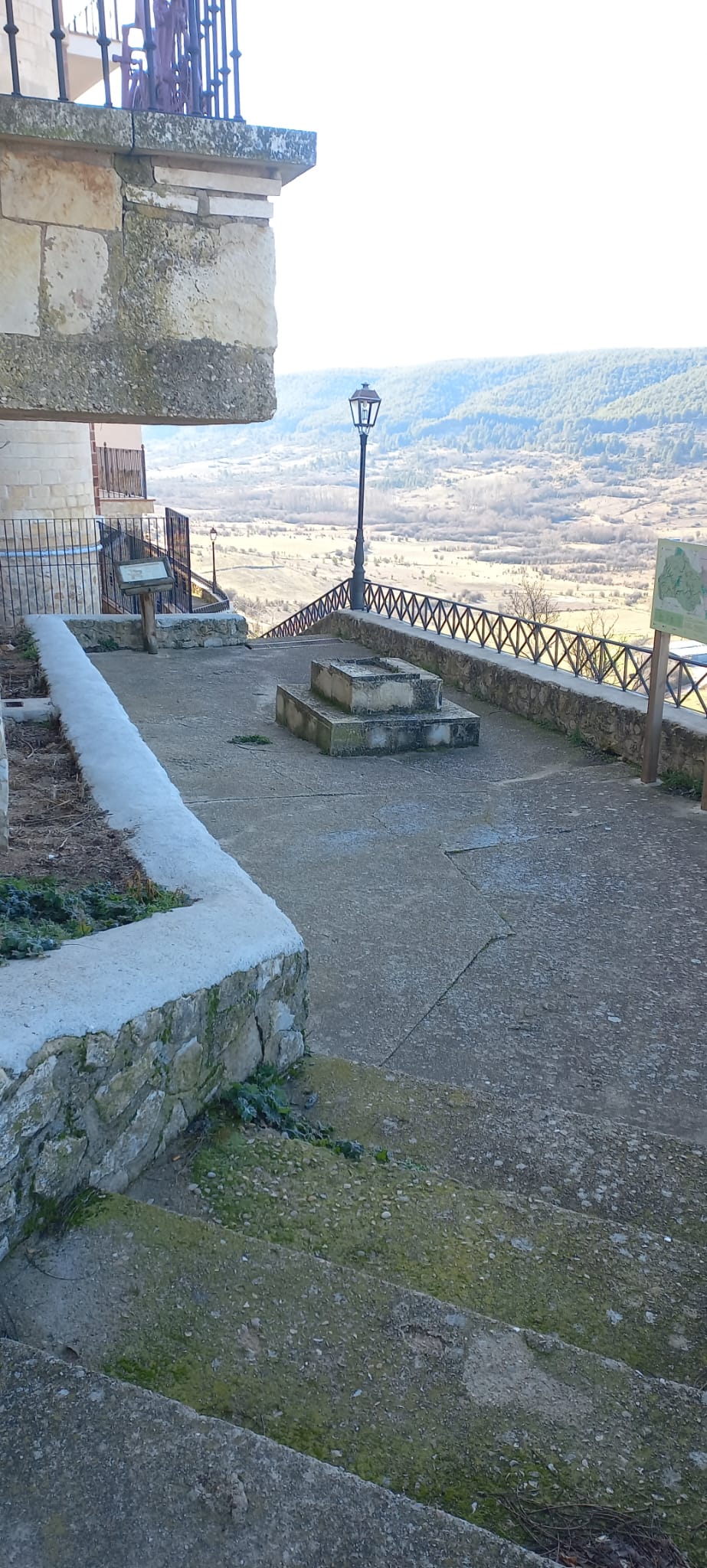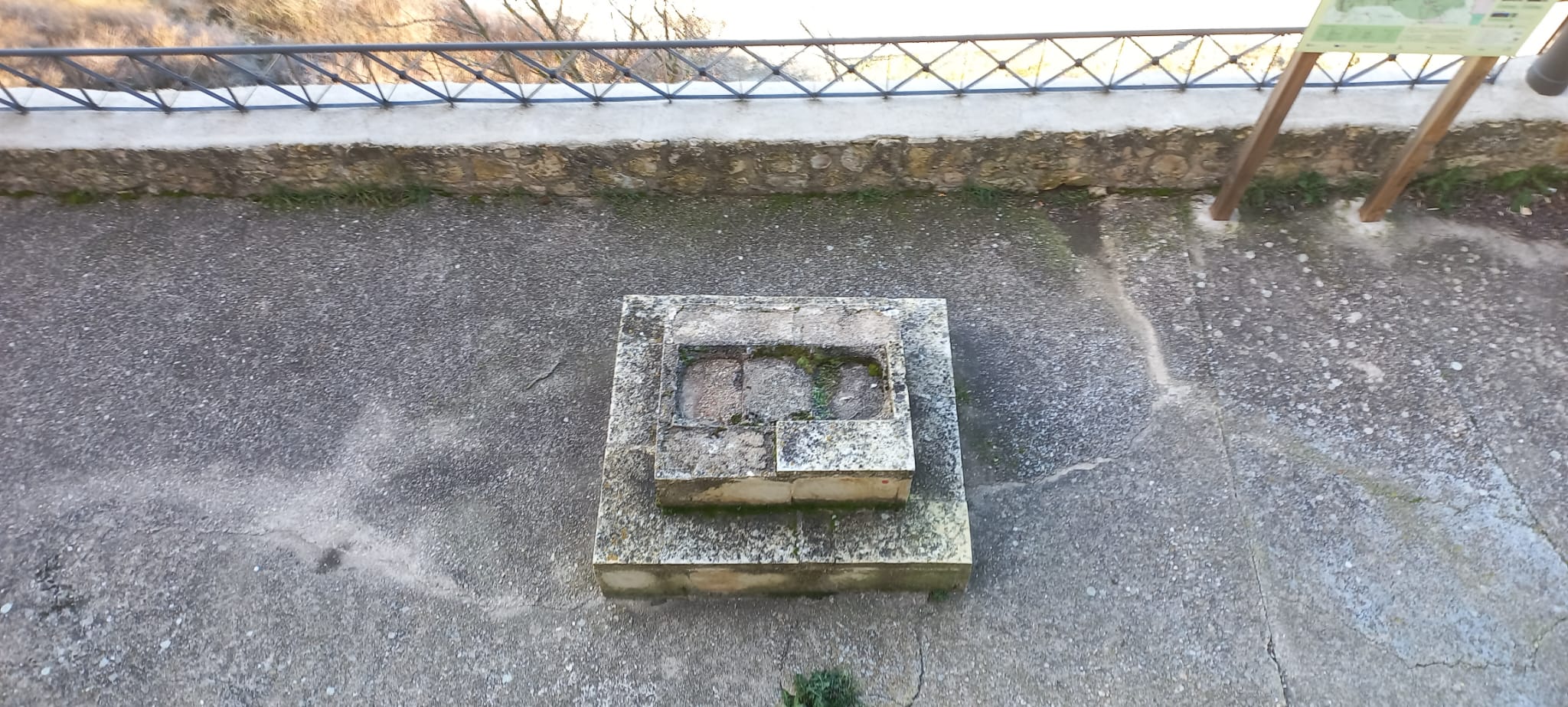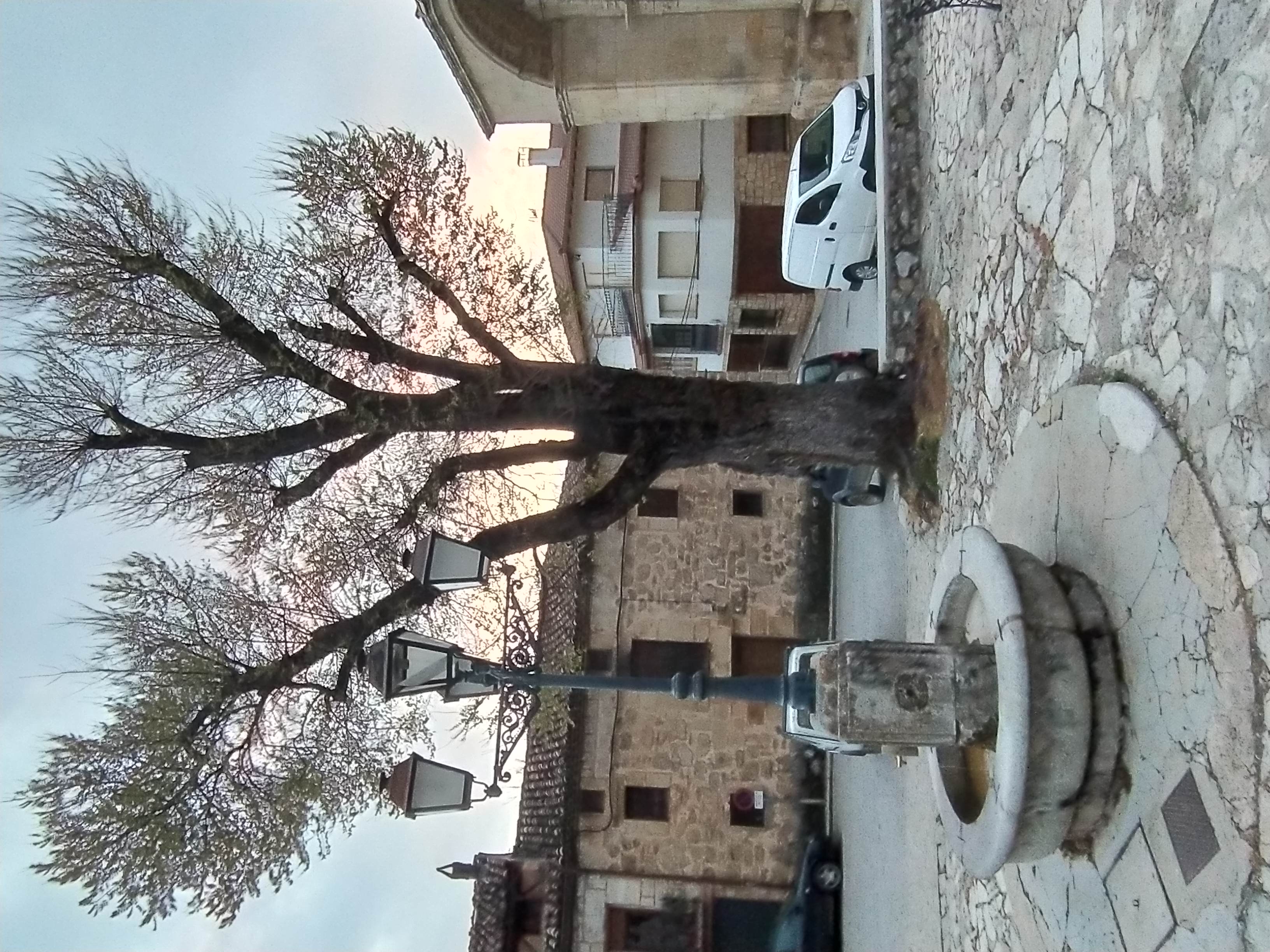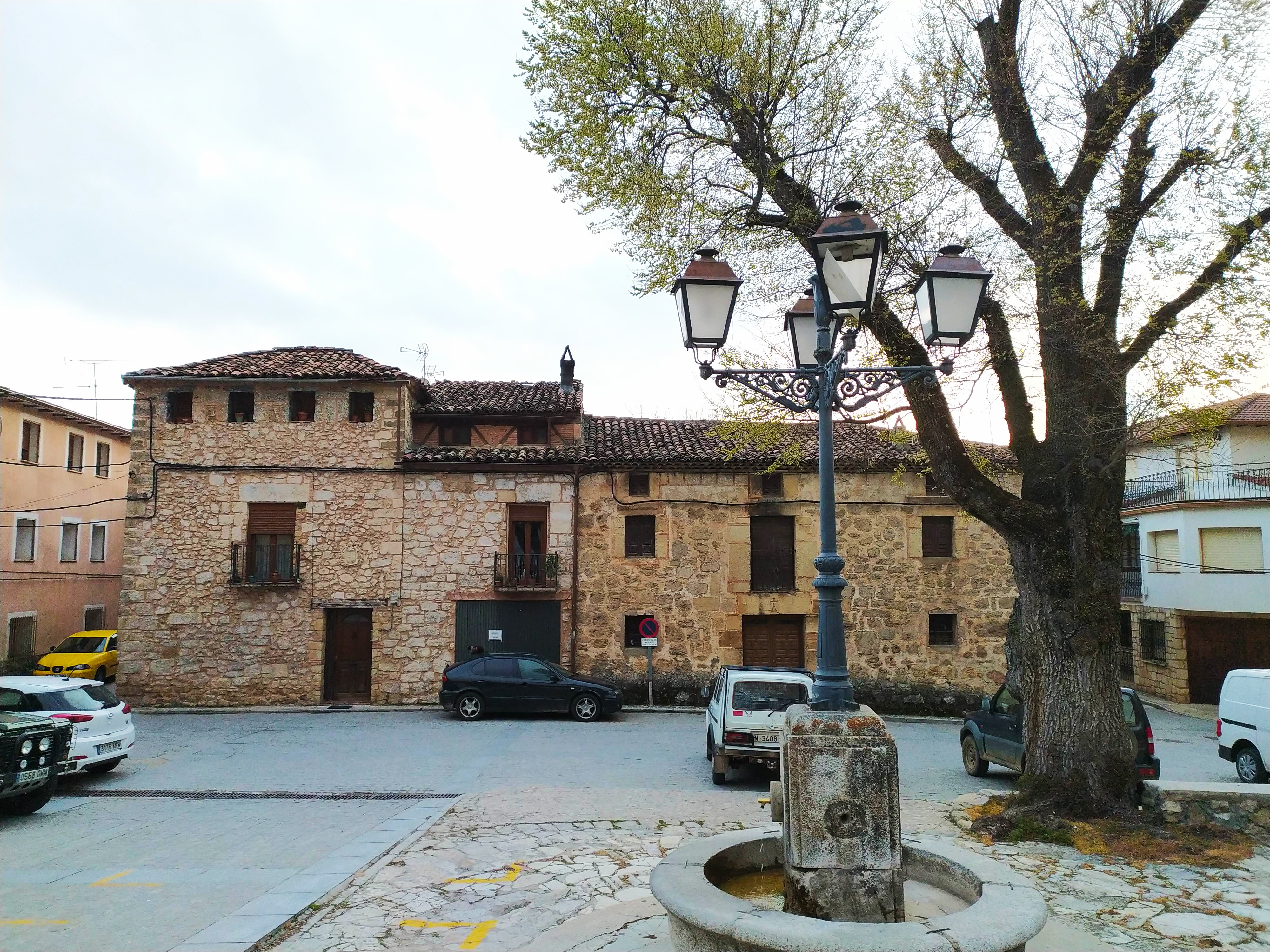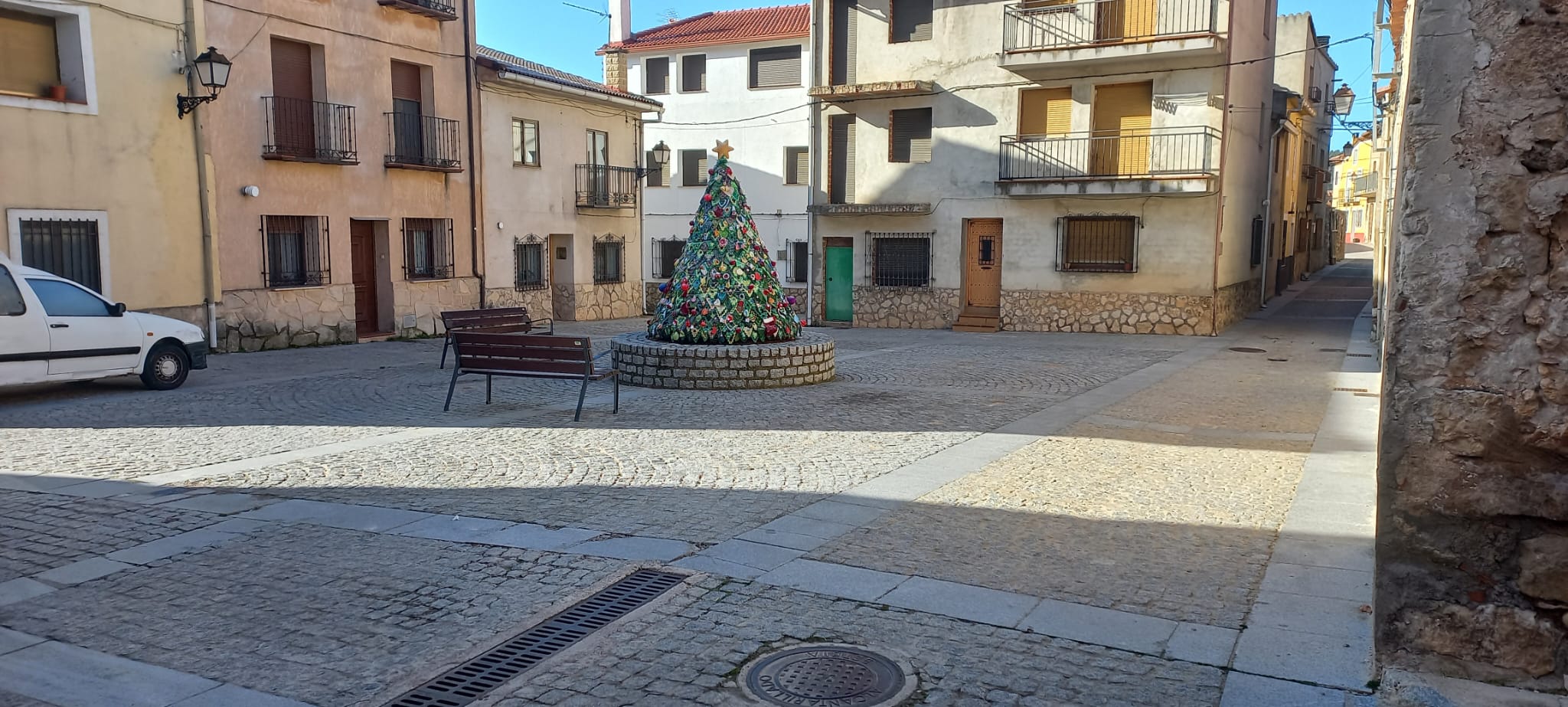Spaces memory in Beteta
Recovery of collective spaces through the memory of the inhabitants of Beteta
The project has an integrated approach, covering the three core values of the European New Bauhaus, ensuring that the project "We recover spaces with memory" is not only sustainable and beautiful, but also responds to the real needs of the population and promotes active participation from all relevant stakeholders in the project.
Spain
PLAZA MAYOR, 1 BETETA CUENCA
Early initiative
Yes
Yes
Yes
No
No
16035: Beteta (ES)
General Objective:
The project aims to restore and enhance collective spaces in Beteta (such as historical fountains, ancient pathways, and scenic viewpoints) through the memories of its inhabitants. The initiative integrates sustainability, accessibility, and beauty into the built environment, preserving the town’s cultural identity and fostering community participation in the design and use of these spaces.
Target Groups:
• Local population of Beteta and its villages, especially elderly residents who can share knowledge of traditional uses of these spaces
• Tourists and visitors, who will experience the added cultural value of the restored spaces.
• Local businesses and artisans, engaged in restoration
• Municipal authorities and local associations, ensuring the project’s integration into the town’s development plans
Specific Objectives:
1. Promote Sustainability in Heritage Restoration:
◦ Use of local materials and traditional techniques
◦ Ecological restoration of degraded natural areas
◦ Integration of water management and energy-efficient solutions in the recovered fountains
2. Strengthen Cultural Identity and Enhance Inclusivity:
◦ Document the historical uses of public spaces through interviews with residents
◦ Develop interpretive trails and accessible panels that connect restored spaces to the town’s living history
◦ Design interventions that ensure accessibility for all citizens, including the elderly and people with reduced mobility
3. Enhance the Aesthetics and Beauty of the Environment:
◦ Restore architectural and landscape elements while maintaining harmony with the natural surroundings
◦ Install ambient lighting at key points, without disrupting the quality of the night sky
◦ Implement collaborative artistic interventions
4. Boost the Local Economy and Encourage Community Participation:
Promote sustainable tourism by showcasing these
The project aims to restore and enhance collective spaces in Beteta (such as historical fountains, ancient pathways, and scenic viewpoints) through the memories of its inhabitants. The initiative integrates sustainability, accessibility, and beauty into the built environment, preserving the town’s cultural identity and fostering community participation in the design and use of these spaces.
Target Groups:
• Local population of Beteta and its villages, especially elderly residents who can share knowledge of traditional uses of these spaces
• Tourists and visitors, who will experience the added cultural value of the restored spaces.
• Local businesses and artisans, engaged in restoration
• Municipal authorities and local associations, ensuring the project’s integration into the town’s development plans
Specific Objectives:
1. Promote Sustainability in Heritage Restoration:
◦ Use of local materials and traditional techniques
◦ Ecological restoration of degraded natural areas
◦ Integration of water management and energy-efficient solutions in the recovered fountains
2. Strengthen Cultural Identity and Enhance Inclusivity:
◦ Document the historical uses of public spaces through interviews with residents
◦ Develop interpretive trails and accessible panels that connect restored spaces to the town’s living history
◦ Design interventions that ensure accessibility for all citizens, including the elderly and people with reduced mobility
3. Enhance the Aesthetics and Beauty of the Environment:
◦ Restore architectural and landscape elements while maintaining harmony with the natural surroundings
◦ Install ambient lighting at key points, without disrupting the quality of the night sky
◦ Implement collaborative artistic interventions
4. Boost the Local Economy and Encourage Community Participation:
Promote sustainable tourism by showcasing these
Sustainability
Heritage
Stake
Identity
Regeneration
1. Use of Local Materials and Traditional Techniques
Local materials such as stone and wood will be used, along with traditional masonry and stonemasonry techniques. This reduces the carbon footprint associated with material transport and preserves local construction knowledge. Restoration of fountains, viewpoints, and pathways will follow low-impact environmental criteria.
2. Nature-Based Solutions
Interventions will respect local ecosystems, prioritizing native vegetation to enhance biodiversity and prevent erosion. Restored fountains will include natural filtration systems to ensure water quality, and pathways will be rehabilitated with minimal land disturbance.
3. Carbon Footprint Reduction and Circular Economy
Energy efficiency measures, such as low-consumption LED lighting in restored spaces, will be implemented. Pedestrian and cycling accessibility will be promoted to reduce motor vehicle dependence. Additionally, all materials used will have a second life, adhering to circular economy principles and minimizing waste.
4. Knowledge Transmission and Sustainability Culture
Intergenerational workshops will be organized where elderly residents will share how past generations relied on local gardens for food and reused materials in daily life. These activities will raise awareness among younger generations about self-sufficiency, resource efficiency, and the importance of restoring sustainable past practices.
5. Sustainable Tourism and Environmental Education
Recovered spaces will be integrated into interpretive routes on biodiversity and heritage, promoting responsible tourism. Astrotourism will be enhanced with sustainable lighting, and educational activities on traditional water use and landscape conservation will be encouraged.
Local materials such as stone and wood will be used, along with traditional masonry and stonemasonry techniques. This reduces the carbon footprint associated with material transport and preserves local construction knowledge. Restoration of fountains, viewpoints, and pathways will follow low-impact environmental criteria.
2. Nature-Based Solutions
Interventions will respect local ecosystems, prioritizing native vegetation to enhance biodiversity and prevent erosion. Restored fountains will include natural filtration systems to ensure water quality, and pathways will be rehabilitated with minimal land disturbance.
3. Carbon Footprint Reduction and Circular Economy
Energy efficiency measures, such as low-consumption LED lighting in restored spaces, will be implemented. Pedestrian and cycling accessibility will be promoted to reduce motor vehicle dependence. Additionally, all materials used will have a second life, adhering to circular economy principles and minimizing waste.
4. Knowledge Transmission and Sustainability Culture
Intergenerational workshops will be organized where elderly residents will share how past generations relied on local gardens for food and reused materials in daily life. These activities will raise awareness among younger generations about self-sufficiency, resource efficiency, and the importance of restoring sustainable past practices.
5. Sustainable Tourism and Environmental Education
Recovered spaces will be integrated into interpretive routes on biodiversity and heritage, promoting responsible tourism. Astrotourism will be enhanced with sustainable lighting, and educational activities on traditional water use and landscape conservation will be encouraged.
Design Based on Local Identity
The architecture and traditional materials of Beteta are respected, ensuring that the restoration and aesthetic improvements maintain the authenticity of the landscape. Traditional materials are used, integrating traditional techniques with modern solutions to improve accessibility and the durability of spaces.
Creation of Evocative Environments
The restoration of fountains not only improves their functionality but also restores their original role as meeting points and places for relaxation. The viewpoints are designed to offer unique sensory experiences, with ergonomic furniture and strategic orientation to enjoy the best views. Ambient lighting enhances the welcoming atmosphere and highlights the value of the nocturnal heritage.
Generation of Positive Emotions
The restored spaces invite contemplation, socializing, and enjoyment of the environment. The combination of natural elements, water, and heritage creates a positive emotional impact, promoting relaxation and connection with the local history. The recovery of historic paths allows visitors to experience the traces of the past while exploring the landscape.
Cultural and Artistic Benefits
The project incorporates local cultural expressions, such as reliefs and artistic details inspired by the history of the municipality. Additionally, cultural activities will be organized in the restored spaces, such as oral storytelling by the elderly about everyday life in the past, creating a bridge between generations.
Previous Experience and Commitment to Community Aesthetics
The municipality has already implemented similar initiatives with great success. One example is the creation of a weaving association, which creates decorative ornaments to beautify the village according to the season. This experience demonstrates the village's interest and involvement in enhancing the environment through art and creativity.
The architecture and traditional materials of Beteta are respected, ensuring that the restoration and aesthetic improvements maintain the authenticity of the landscape. Traditional materials are used, integrating traditional techniques with modern solutions to improve accessibility and the durability of spaces.
Creation of Evocative Environments
The restoration of fountains not only improves their functionality but also restores their original role as meeting points and places for relaxation. The viewpoints are designed to offer unique sensory experiences, with ergonomic furniture and strategic orientation to enjoy the best views. Ambient lighting enhances the welcoming atmosphere and highlights the value of the nocturnal heritage.
Generation of Positive Emotions
The restored spaces invite contemplation, socializing, and enjoyment of the environment. The combination of natural elements, water, and heritage creates a positive emotional impact, promoting relaxation and connection with the local history. The recovery of historic paths allows visitors to experience the traces of the past while exploring the landscape.
Cultural and Artistic Benefits
The project incorporates local cultural expressions, such as reliefs and artistic details inspired by the history of the municipality. Additionally, cultural activities will be organized in the restored spaces, such as oral storytelling by the elderly about everyday life in the past, creating a bridge between generations.
Previous Experience and Commitment to Community Aesthetics
The municipality has already implemented similar initiatives with great success. One example is the creation of a weaving association, which creates decorative ornaments to beautify the village according to the season. This experience demonstrates the village's interest and involvement in enhancing the environment through art and creativity.
1. Accessibility for All
A key goal is to make the restored spaces accessible to everyone, including those with mobility impairments or disabilities. Solutions such as paved paths, clear signage, and urban furniture elements adapted for accessibility, like benches and tables at appropriate heights, will be implemented, allowing everyone to enjoy the spaces equally.
2. Affordability and Community Participation
The project is designed so that all community members can participate without economic barriers. Activities, workshops, and cultural events will be affordable and open to all age groups and socio-economic levels.Additionally, local knowledge and skills will be utilized, such as collaboration with the village’s weavers, to create decorations that not only beautify the municipality but also provide inclusive employment opportunities.
3. Inclusive Governance Systems
The Beteta City Council has established a citizen participation platform on its website, where residents can share their opinions, suggestions, and concerns about ongoing projects. Other participation channels are also provided for those with fewer digital skills, such as in-person meetings, suggestion boxes placed at strategic locations in the village, and informational talks. This ensures that all citizens, regardless of their digital literacy, can influence the project's development.
4. New Social Models
The project promotes new social models, fostering social cohesion and collaboration between generations. Intergenerational workshops and oral storytelling about the town’s history are examples of how a more united and supportive community is being built. This inclusive approach of promoting active participation from all members of society can serve as a model for other rural initiatives.
This proyect is an example of how a project can be inclusive and accessible for all, ensuring that the community not only participates in the restoration process but also benefits from the results equitably.
A key goal is to make the restored spaces accessible to everyone, including those with mobility impairments or disabilities. Solutions such as paved paths, clear signage, and urban furniture elements adapted for accessibility, like benches and tables at appropriate heights, will be implemented, allowing everyone to enjoy the spaces equally.
2. Affordability and Community Participation
The project is designed so that all community members can participate without economic barriers. Activities, workshops, and cultural events will be affordable and open to all age groups and socio-economic levels.Additionally, local knowledge and skills will be utilized, such as collaboration with the village’s weavers, to create decorations that not only beautify the municipality but also provide inclusive employment opportunities.
3. Inclusive Governance Systems
The Beteta City Council has established a citizen participation platform on its website, where residents can share their opinions, suggestions, and concerns about ongoing projects. Other participation channels are also provided for those with fewer digital skills, such as in-person meetings, suggestion boxes placed at strategic locations in the village, and informational talks. This ensures that all citizens, regardless of their digital literacy, can influence the project's development.
4. New Social Models
The project promotes new social models, fostering social cohesion and collaboration between generations. Intergenerational workshops and oral storytelling about the town’s history are examples of how a more united and supportive community is being built. This inclusive approach of promoting active participation from all members of society can serve as a model for other rural initiatives.
This proyect is an example of how a project can be inclusive and accessible for all, ensuring that the community not only participates in the restoration process but also benefits from the results equitably.
1. Active Community Participation
From the beginning of the project, participatory workshops and meetings with locals have been organized to gather their opinions on the spaces to be restored, the historical elements to be preserved, and the cultural activities that interest them most. Citizens have had the opportunity to share their memories, stories, and traditions related to collective spaces such as fountains and paths, enriching the project's approach. Additionally, the creation of the weavers' association is an example of how local skills are integrated into the project, allowing residents to contribute their art and creativity to beautify the village.
2. Ongoing Engagement Through Participation Channels
The Beteta Town Hall has established several participation channels to ensure that all citizens, regardless of their educational level or digital skills, can express their concerns and suggestions. The online citizen participation platform complements traditional methods such as in-person meetings and suggestion boxes. This inclusive approach ensures that the voices of young people, the elderly, and those with limited access to technology are heard and considered.
3. Impact of Participation
Active citizen participation has strengthened the sense of ownership and commitment to the project. Through this collaboration, the community not only contributes to the restoration of its heritage, but also directly benefits from the creation of a more accessible, culturally enriched, and cohesive environment. This participation has fostered social cohesion, improving intergenerational relationships and generating a greater sense of local identity. The impact of this involvement is reflected in the sustainability and ongoing success of the initiatives born from the community itself.
From the beginning of the project, participatory workshops and meetings with locals have been organized to gather their opinions on the spaces to be restored, the historical elements to be preserved, and the cultural activities that interest them most. Citizens have had the opportunity to share their memories, stories, and traditions related to collective spaces such as fountains and paths, enriching the project's approach. Additionally, the creation of the weavers' association is an example of how local skills are integrated into the project, allowing residents to contribute their art and creativity to beautify the village.
2. Ongoing Engagement Through Participation Channels
The Beteta Town Hall has established several participation channels to ensure that all citizens, regardless of their educational level or digital skills, can express their concerns and suggestions. The online citizen participation platform complements traditional methods such as in-person meetings and suggestion boxes. This inclusive approach ensures that the voices of young people, the elderly, and those with limited access to technology are heard and considered.
3. Impact of Participation
Active citizen participation has strengthened the sense of ownership and commitment to the project. Through this collaboration, the community not only contributes to the restoration of its heritage, but also directly benefits from the creation of a more accessible, culturally enriched, and cohesive environment. This participation has fostered social cohesion, improving intergenerational relationships and generating a greater sense of local identity. The impact of this involvement is reflected in the sustainability and ongoing success of the initiatives born from the community itself.
Local Level
At the local level, the Beteta Town Hall has played a central role in organizing participatory workshops and consultations with residents. Additionally, local associations such as the Association of Weavers have been formed, and other existing associations such as Beteta Cultural, FIMUC Association, Virgen de la Rosa Association, and Beteta-MTB-Senderismo Club have participated. Citizens have also been crucial in decision-making, as their stories, memories, and knowledge about local heritage have guided the project.
Regional Level
At the regional level, collaboration has been established with neighboring localities to share experiences and best practices related to heritage restoration and sustainable development.
National Level
At the national level, support has been sought from organizations dedicated to the preservation of cultural heritage, ensuring that restoration practices adhere to regulations and best practices.
European Level
At the European level, the project aligns with the values of the European New Bauhaus. Participation in European programs ensures the sustainability and accessibility of restored spaces, while also incorporating best practices from across Europe in the design and implementation of the project.
This multi-level approach has ensured that the project is inclusive, sustainable, and culturally relevant at all stages of its development.
At the local level, the Beteta Town Hall has played a central role in organizing participatory workshops and consultations with residents. Additionally, local associations such as the Association of Weavers have been formed, and other existing associations such as Beteta Cultural, FIMUC Association, Virgen de la Rosa Association, and Beteta-MTB-Senderismo Club have participated. Citizens have also been crucial in decision-making, as their stories, memories, and knowledge about local heritage have guided the project.
Regional Level
At the regional level, collaboration has been established with neighboring localities to share experiences and best practices related to heritage restoration and sustainable development.
National Level
At the national level, support has been sought from organizations dedicated to the preservation of cultural heritage, ensuring that restoration practices adhere to regulations and best practices.
European Level
At the European level, the project aligns with the values of the European New Bauhaus. Participation in European programs ensures the sustainability and accessibility of restored spaces, while also incorporating best practices from across Europe in the design and implementation of the project.
This multi-level approach has ensured that the project is inclusive, sustainable, and culturally relevant at all stages of its development.
1. Cultural Heritage and Restoration
Heritage and restoration specialists will lead the conservation and rehabilitation of historical spaces, such as fountains and viewpoints. Their approach will ensure that interventions respect traditional techniques, preserving the authenticity and memory of the places.
2. Architecture and Urban Design
Architects and urban designers will work on creating accessible and functional spaces, using sustainability principles. Modern solutions will be integrated to improve accessibility and sensory experience, without compromising the traditional aesthetic of the town.
3. Ecology and Sustainability
Experts in ecology and sustainability will be key to ensuring that the project respects the environment. The implementation of solutions such as efficient ambient lighting and the recovery of natural spaces will ensure the sustainability of the restored areas.
4. Social Work and Community Participation
Sociologists and social work professionals will facilitate the active participation of citizens, ensuring that the community's needs are reflected in the design. Workshops and consultations will be organized to gather local stories, promoting the involvement of various generations.
5. Local Art and Culture
Local artists and creators, such as the Weavers' Association, will contribute significantly to the initiative by creating decorations that will beautify the spaces and reflect Beteta's cultural identity. This artistic approach will foster a sense of belonging and pride within the community.
The interaction between these disciplines will provide a comprehensive approach, where cultural preservation will merge with sustainability, accessibility, and art. This collaborative process will add value to the project, creating spaces
Heritage and restoration specialists will lead the conservation and rehabilitation of historical spaces, such as fountains and viewpoints. Their approach will ensure that interventions respect traditional techniques, preserving the authenticity and memory of the places.
2. Architecture and Urban Design
Architects and urban designers will work on creating accessible and functional spaces, using sustainability principles. Modern solutions will be integrated to improve accessibility and sensory experience, without compromising the traditional aesthetic of the town.
3. Ecology and Sustainability
Experts in ecology and sustainability will be key to ensuring that the project respects the environment. The implementation of solutions such as efficient ambient lighting and the recovery of natural spaces will ensure the sustainability of the restored areas.
4. Social Work and Community Participation
Sociologists and social work professionals will facilitate the active participation of citizens, ensuring that the community's needs are reflected in the design. Workshops and consultations will be organized to gather local stories, promoting the involvement of various generations.
5. Local Art and Culture
Local artists and creators, such as the Weavers' Association, will contribute significantly to the initiative by creating decorations that will beautify the spaces and reflect Beteta's cultural identity. This artistic approach will foster a sense of belonging and pride within the community.
The interaction between these disciplines will provide a comprehensive approach, where cultural preservation will merge with sustainability, accessibility, and art. This collaborative process will add value to the project, creating spaces
1. Integration of Local Memory and Heritage
Unlike typical restoration projects that focus solely on the physical aspects, this initiative innovates by emphasizing the intangible cultural heritage of Beteta. The project will incorporate local stories, memories, and knowledge passed down through generations, particularly from older residents. Workshops and oral storytelling will be key components, ensuring that the history and traditions of the village are interwoven into the physical spaces being restored, providing a deeper connection between the community and its heritage.
2. Circular Economy and Sustainability
The project will also stand out for its commitment to circular economy principles. Materials used for restoration will be carefully selected to minimize waste, with a focus on reusing local materials and incorporating sustainable practices throughout the process. This is an innovative approach compared to many traditional restoration efforts that do not fully embrace the circular economy.
3. Active Community Participation
The active involvement of the local community, especially through local associations like the Weavers’ Association, marks an innovation in how public spaces are rejuvenated. The citizens will not only contribute with memories but will actively participate in the creation of the spaces, contributing their artistic and cultural expressions, which will enhance the uniqueness of the project.
4. Multidisciplinary Collaboration
By integrating disciplines such as social work, urban design, architecture, ecology, and local art, the initiative fosters a holistic approach that goes beyond the typical collaboration seen in heritage restoration. The synergy between these areas will result in spaces that are functional, inclusive, environmentally sustenable
Unlike typical restoration projects that focus solely on the physical aspects, this initiative innovates by emphasizing the intangible cultural heritage of Beteta. The project will incorporate local stories, memories, and knowledge passed down through generations, particularly from older residents. Workshops and oral storytelling will be key components, ensuring that the history and traditions of the village are interwoven into the physical spaces being restored, providing a deeper connection between the community and its heritage.
2. Circular Economy and Sustainability
The project will also stand out for its commitment to circular economy principles. Materials used for restoration will be carefully selected to minimize waste, with a focus on reusing local materials and incorporating sustainable practices throughout the process. This is an innovative approach compared to many traditional restoration efforts that do not fully embrace the circular economy.
3. Active Community Participation
The active involvement of the local community, especially through local associations like the Weavers’ Association, marks an innovation in how public spaces are rejuvenated. The citizens will not only contribute with memories but will actively participate in the creation of the spaces, contributing their artistic and cultural expressions, which will enhance the uniqueness of the project.
4. Multidisciplinary Collaboration
By integrating disciplines such as social work, urban design, architecture, ecology, and local art, the initiative fosters a holistic approach that goes beyond the typical collaboration seen in heritage restoration. The synergy between these areas will result in spaces that are functional, inclusive, environmentally sustenable
1. Citizen Participation
The project involves Beteta’s residents through open workshops and consultations, where they will share their knowledge and memories of local heritage. The stories of the residents, especially the elderly, will be key to guiding the restoration of the spaces. Additionally, the community will actively participate in creating decorative ornaments, such as those made by the Association of Weavers.
2. Circular Economy and Sustainability
Circular economy principles will be applied by using recycled and local materials to minimize waste. Restoration techniques will integrate ecological and low-impact environmental solutions, combining traditional methods with sustainable innovations.
3. Inclusive Design
The design of the spaces will be accessible to all, ensuring they are functional and comfortable for people with different abilities. Accessibility will be enhanced, and a sensory experience will be created through the design of viewpoints, fountains, and paths that promote interaction with the natural and cultural surroundings.
4. Multidisciplinary Collaboration
The project will bring together architects, urban planners, ecologists, historians, and local artists to work together on the restoration, ensuring that the interventions are sustainable, culturally relevant, and visually appealing.
This comprehensive approach will transform Beteta’s public spaces into active gathering places that celebrate and preserve the collective memory of the community.
The project involves Beteta’s residents through open workshops and consultations, where they will share their knowledge and memories of local heritage. The stories of the residents, especially the elderly, will be key to guiding the restoration of the spaces. Additionally, the community will actively participate in creating decorative ornaments, such as those made by the Association of Weavers.
2. Circular Economy and Sustainability
Circular economy principles will be applied by using recycled and local materials to minimize waste. Restoration techniques will integrate ecological and low-impact environmental solutions, combining traditional methods with sustainable innovations.
3. Inclusive Design
The design of the spaces will be accessible to all, ensuring they are functional and comfortable for people with different abilities. Accessibility will be enhanced, and a sensory experience will be created through the design of viewpoints, fountains, and paths that promote interaction with the natural and cultural surroundings.
4. Multidisciplinary Collaboration
The project will bring together architects, urban planners, ecologists, historians, and local artists to work together on the restoration, ensuring that the interventions are sustainable, culturally relevant, and visually appealing.
This comprehensive approach will transform Beteta’s public spaces into active gathering places that celebrate and preserve the collective memory of the community.
The "Recovering Spaces with Memory" project is entirely replicable and transferable to other places, beneficiary groups, and contexts.
Participatory Methodology
The citizen participation approach, where residents actively contribute to the restoration and preservation of local heritage, can easily be applied in other municipalities. Workshops and consultations can be organized in any community to capture local knowledge and foster a sense of belonging and commitment to heritage.
Circular Economy Principles
The application of circular economy in the restoration of public spaces, through the use of recycled and local materials, is a model that can be adapted in any setting, reducing environmental impact and promoting sustainability in other areas.
Inclusive and Accessible Design
The design of inclusive and accessible spaces is an aspect that can be replicated in any restoration project, ensuring that the spaces are suitable for all people, regardless of their physical abilities.
Multidisciplinary Collaboration
The integration of various disciplines, such as architecture, ecology, local history, and art, is a flexible approach that can be transferred to other initiatives, promoting a holistic and enriching vision.
Experience Transfer
A representation of the project is willing to organize workshops and consultations with other interested communities, sharing the lessons learned and guiding them in implementing similar processes. This collaborative approach can be replicated and adapted to create sustainable and culturally relevant restoration projects in other contexts.
Participatory Methodology
The citizen participation approach, where residents actively contribute to the restoration and preservation of local heritage, can easily be applied in other municipalities. Workshops and consultations can be organized in any community to capture local knowledge and foster a sense of belonging and commitment to heritage.
Circular Economy Principles
The application of circular economy in the restoration of public spaces, through the use of recycled and local materials, is a model that can be adapted in any setting, reducing environmental impact and promoting sustainability in other areas.
Inclusive and Accessible Design
The design of inclusive and accessible spaces is an aspect that can be replicated in any restoration project, ensuring that the spaces are suitable for all people, regardless of their physical abilities.
Multidisciplinary Collaboration
The integration of various disciplines, such as architecture, ecology, local history, and art, is a flexible approach that can be transferred to other initiatives, promoting a holistic and enriching vision.
Experience Transfer
A representation of the project is willing to organize workshops and consultations with other interested communities, sharing the lessons learned and guiding them in implementing similar processes. This collaborative approach can be replicated and adapted to create sustainable and culturally relevant restoration projects in other contexts.
Climate change and sustainability
The project promotes circular economy through the restoration of spaces using recycled and local materials, reducing carbon footprint. The use of native plants adapted to the local environment contributes to reducing water consumption and preserving biodiversity. Circular economy workshops will encourage savings in consumption and recycling.
Biodiversity loss
Restoring fountains and viewpoints promotes a better relationship with nature and fosters the conservation of the natural environment while preserving historical heritage.
Social and economic inequality
The inclusive approach involves the entire community, especially the vulnerable. Participatory workshops ensure that all members, especially the elderly, have a voice, promoting social cohesion.
Cultural heritage degradation
The project contributes to cultural preservation through the restoration of historical spaces, ensuring future generations can learn and experience local history.
Rural-urban disconnection
It fosters the revitalization of rural spaces through sustainable tourism and heritage valorization, generating employment and economic development.
"We Recover Spaces with Memory" offers local solutions to address global challenges, being a sustainable, inclusive, and culturally rich model that can be replicated in other communities.
The project promotes circular economy through the restoration of spaces using recycled and local materials, reducing carbon footprint. The use of native plants adapted to the local environment contributes to reducing water consumption and preserving biodiversity. Circular economy workshops will encourage savings in consumption and recycling.
Biodiversity loss
Restoring fountains and viewpoints promotes a better relationship with nature and fosters the conservation of the natural environment while preserving historical heritage.
Social and economic inequality
The inclusive approach involves the entire community, especially the vulnerable. Participatory workshops ensure that all members, especially the elderly, have a voice, promoting social cohesion.
Cultural heritage degradation
The project contributes to cultural preservation through the restoration of historical spaces, ensuring future generations can learn and experience local history.
Rural-urban disconnection
It fosters the revitalization of rural spaces through sustainable tourism and heritage valorization, generating employment and economic development.
"We Recover Spaces with Memory" offers local solutions to address global challenges, being a sustainable, inclusive, and culturally rich model that can be replicated in other communities.
The planned activities for the development and implementation of the initiative "We Recover Spaces with Memory" include a series of actions that align with the values and principles of the New European Bauhaus (NEB). Key activities are:
Participatory workshops: Workshops will be organized with the local community, sharing historical and cultural knowledge about the spaces to be restored, promoting active participation and inclusion. These workshops reflect the NEB’s principle of involving all sectors, ensuring that the most vulnerable people have a voice in the process.
Restoration of public spaces: The restoration of fountains, viewpoints, and historic paths will use sustainable and circular materials. This approach is in line with NEB's environmental sustainability value by using local materials adapted to the environment and optimizing the use of natural resources.
Promotion of circular economy: Workshops on recycling, material reuse, and water conservation will be held. These activities align with the NEB’s sustainability, showcasing innovative solutions for resource management and low environmental impact practices.
Encouragement of community creativity and art: Artistic initiatives, such as creating seasonal decorations through the Weavers’ Association, will be supported. These activities promote creativity and inclusive design, fundamental principles of the NEB.
Next steps:
Progressive implementation: Restorations will begin with the most used public spaces and extend to other areas.
Expansion of participation: Workshops and activities will continue to engage more community sectors.
Evaluation and adjustments: Ongoing monitoring will ensure the project aligns with NEB values, adjusting actions based on community needs.
Participatory workshops: Workshops will be organized with the local community, sharing historical and cultural knowledge about the spaces to be restored, promoting active participation and inclusion. These workshops reflect the NEB’s principle of involving all sectors, ensuring that the most vulnerable people have a voice in the process.
Restoration of public spaces: The restoration of fountains, viewpoints, and historic paths will use sustainable and circular materials. This approach is in line with NEB's environmental sustainability value by using local materials adapted to the environment and optimizing the use of natural resources.
Promotion of circular economy: Workshops on recycling, material reuse, and water conservation will be held. These activities align with the NEB’s sustainability, showcasing innovative solutions for resource management and low environmental impact practices.
Encouragement of community creativity and art: Artistic initiatives, such as creating seasonal decorations through the Weavers’ Association, will be supported. These activities promote creativity and inclusive design, fundamental principles of the NEB.
Next steps:
Progressive implementation: Restorations will begin with the most used public spaces and extend to other areas.
Expansion of participation: Workshops and activities will continue to engage more community sectors.
Evaluation and adjustments: Ongoing monitoring will ensure the project aligns with NEB values, adjusting actions based on community needs.

